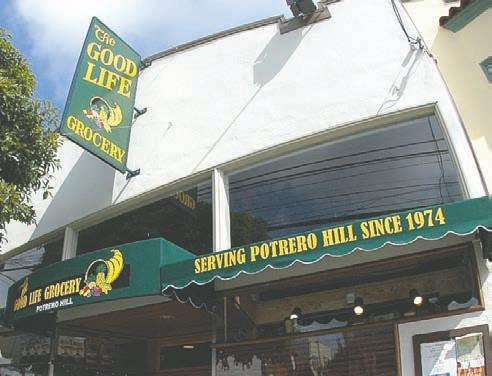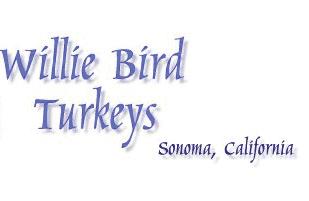




For nearly two years the San Francisco Municipal Transportation Agency has been meeting with Dogpatch community members to develop a parking management plan for the neighborhood amidst increasing parking demand. Much of Dogpatch’s curbside is unregulated, resulting in a scarcity of spots within the context of a growing residential population and heavier commuter traffic. SFMTA’s plan is intended to increase parking availability.
“We’ve been meeting fairly regularly with engaged neighbors, such as with the Dogpatch Neighborhood Association,” said Hank Willson, principal analyst, SFMTA. “We’ve presented a proposal based on feedback from the last two years and to give a sense of what the next steps will be. The proposal is close to getting done, but we’re making a few tweaks based on what came out of the open houses. Some modifications were desired for clarity.” Officials expect to implement the final plan next year.
SFMTA held two open houses in September to solicit input from community members. Following several previous meetings, SFMTA representatives presented a draft of the parking management plan at an October DNA meeting. In response, several neighbors who’ve been tracking the plan’s emergence over the past two years distributed an illustration of an alternate proposal they’d developed. Other attendees posed questions to officials about plan details, and expressed
opinions about regulations for certain blocks.
“In Southern Dogpatch we are 24/7 unregulated; no restrictions on curbside,” said Bruce Huie, DNA president. “We have a very strong opinion that we need to have restrictions on curbside. Others have various opinions about curbside restrictions, and we want to make sure that as we roll things out we respect the North, we respect the South and we also respect what’s in the middle, which is Central.”
Based on two studies conducted last year covering neighborhood areas divided into North, Central and South sections, SFMTA officials found that blocks with parking regulations had a significant mix of vehicles registered both locally and non-locally throughout the day. On blocks lacking regulations, the number of vehicles with local registrations was substantially lower.
SFMTA’s draft proposal spans from Mariposa Street south to Cesar Chavez Street and Iowa Street east to Illinois Street. A mixture of paid, permit, and various forms of time-limited parking regulations would cover most of the area, leaving a minuscule amount of unregulated parking. Parking regulations on most blocks within that area would consist of a combination of permit parking with one or two-hour time limits for those lacking permits, four-hour time limited parking, fourhour time limited paid parking, and paid parking with no time restrictions geared towards commuters. While the rules would vary on different blocks, much of Southern Dogpatch would be subject to four-hour time limited park-
The View hopes all North Bay fire victims can make their way home soon, and mourns the loss of those who died.

ing, while North and Central Dogpatch would be covered with ample amounts of time-limited permit parking, along with many blocks utilizing the other array of proposed rules.
While there’s some overlap between SFMTA’s plan and the neighbors’ alternative, the community plan calls for greater use of paid and permit parking. For example, under SFMTA’s plan Cesar Chavez Street would be subject to time limited parking, whereas the neighbors’ plan reflects paid parking. In Central Dogpatch, SFMTA’s concept is a mixture of time limited, four-hour time limited paid and permit parking for 22nd Street. Conversely, the community’s plan would implement a predominance of paid and permit parking measures for that street. On the neighborhood’s north end, Esprit Park would be bounded by four-hour time limited and permit parking with two-hour time limits for those without permits under SFMTA’s proposal. Neighbors want permit parking surrounding the park.
Other requests by community
PARKING continues on page 14
As the late Tom Petty put it, “Hey baby, there ain’t no easy way out.” The line is apt for many San Franciscans who find themselves at the end of a relationship, confronting the shocking cost of new digs.
If the anger and heartbreak aspects of a breakup aren’t bad enough, the process of deciding who gets to keep a unit, if they can even afford it by themselves, and who has to dive into a real estate market where one-bedrooms cost more than $3,000 a month, wreaks additional havoc. Stories of the primary importance of a relationship with a lease in the City abound. Most everyone knows at least one, the most common being a friend who is either couch surfing or was forced to leave San Francisco, and sometimes a job,
Last month, the San Francisco Department of Homelessness and Supportive Housing released a “FiveYear Strategic Framework” to address rootlessness. Under the Framework, chronic homelessness would be halved by December 2022, with an end to “… large, long term encampments by July 2019.” In addition, the outline called for implementing coordinated care systems, performance accountability, improvements to the City’s response to street homelessness and creation of a youth homeless plan by the end of 2019.
The Framework, which was originally supposed to be published last spring, was initially only partially released, in the form of an executive summary that omitted key details or references to supporting documents. This information, along with briefings from DHSH head Jeff Kositsky, served as the basis for a San Fran -
cisco Chronicle article and feature on KQED’s Forum program.
DHSH was formed a bit more than a year ago, with a mandate to effectively address the City’s chronic homeless problem. During that time, in addition to drafting the Framework, the Department has opened a significant number of new housing opportunities for homeless individuals and families.
The Framework indicates that Homeward Bound will play a more significant role in addressing homelessness in San Francisco. Under the program, the City pays to transport individuals to live with a supportive family member. According to a DHSH staff person, “Homeward Bound, specifically, is something to offer anyone and everyone we work with.”
However, transport can be triggered after a cursory review of the new living situation, with limited follow-up
APARTMENT continues on page 14 HOMELESSNESS
Likely before most District 10 voters are aware that there’s an election, or know who the potential candidates may be, last month Mayor Ed Lee endorsed Board of Education president Shamann Walton for District 10 Supervisor in the November 2018 ballot. “Our City needs leaders like Shamann Walton, who are truly committed to improving our City and the lives of our residents,” said Lee. “I have worked directly with Shamann to improve public education, invest in our neighborhoods and bring new skills and good jobs to young people in our communities.”
Dogpatch Café closed at the end of September, ending eight years in business. Perhaps the shuttering represents a hallmark of sorts; the retraction of a

Editor,
caffeine emporium, as opposed to an addition…What comes
bobo
Live Oak School is expanding, taking over additional adjacent space, growing from 350 to 420 students.
Renovations begins in January… 16th Street, from Castro to Third Streets, is being repaved. Work will start on the Potrero Avenue to Third Street section in early 2018…a new sewer line is being installed to serve Mission Bay that’ll pass under Potrero Hill…A 5,140 square foot corner market is being planned for a University of California, San Francisco building at 602 Minnesota Street, to open in May 2019. UCSF is looking for a community-based tenant… Dogpatch-based BAYCAT, a nonprofit that provides education and employment to low income youth, youth of color and young women, turned 13 years-old last month. Happy anniversary!
Straws – those slender plastic tubes from which to sip frothy, sweetened, coffee drinks, sodas, and other beverages – are awesome. Children transform them into toys, sucking in chocolate milk at different speeds, in a kind of stutter-step race to the top. They hold one end to trap the liquid, allowing it to pour out all at once in a satisfying splash, and create weapons of soft destruction by balling up the pipes’ paper wrapping – or leaving it half on – and firing away. Adults wrap their lips around the cylinders seductively, drawing in fluid that’s almost guaranteed to be festive. After all, straws are generally attached to something delicious, or at least thirst-quenching.
whatever we damn please.
The capitalistic system, combined with unrelenting population growth, is just too good at turning what should be luxuries – water-sucking almonds, electronic devices, pesticides – into quickly disposable commodities. Until they are consumed to death or become too dangerously ubiquitous to continue to use. It’s a distressingly familiar tragedy of the commons. Not so long ago we hunted whales almost to extinction to make buttons out of their bones, and wiped the West African black rhinoceros from existence so as to harvest its horns in the service of improving the quality of our erections.
I’m shocked that the View would print such a comment from a Potrero Hill resident as appeared in the October “Short Cuts” column! I’ve lived on the Hill for more than 23 years. How could the community newspaper embarrass Sapporo, the recent purchaser of Anchor Brewing Company, which saved the brewery? Would the View rather they close their doors and let 100+ years of history die? I’m so upset that you published this. Not to mention that all employees are at risk of being fired by Sapporo. Check your sources better next time.
The City and Country needs to wake up to what’s happening in the beer industry, and be thankful Anchor is not only staying on the Hill, but expanding access to the public.
Andrea Devries Carolina StreetStraws are also absurd. An excess piece of plastic that’s designed to keep lips away from the associated container. Their purpose is trivial, non-essential, fatuous. Are we afraid that the too cold or too hot beverage will attack our face unless it’s tethered a safe distance away? Are there too few parts in a takeaway beverage vessel –lid, protective sleeve, hole punch – that we need another one, so that we have sufficient elements to meticulously construct our to-go cups like mini model airplanes?
Someday, will grow to understand that straws – and plastic bags and water bottles, among other items – create a planet-altering killer waste stream, and do something to effectively manage or eliminate them. Until then, the earth will just have to suck it up.
know
community, and help sustain your neighborhood newspaper. Modest base pay, plus commission. Send note and résumé to: editor@potreroview.net

Once restricted to 1930s’ soda fountains, straws have become one of the planet’s most ubiquitous unnecessary products. Americans may use upwards of a half-billion straws, every day. Many of these are discarded like cigarette butts, onto sidewalks. More simply escape the recycling stream to attach to much greater water bodies than what’s inside a cup, making their way to the sea in a quest to fulfill their essential purpose of fastening tube to liquid. Although straws amount to a fraction of ocean plastic, their size makes them one of the most insidious polluters. They entangle marine animals, are consumed by fish, and slow-bleed their pliable flesh into the eco-system, causing who knows what kind of weird damage.



In a fully compassionate, aware and thoughtful world we’d all laugh at our odd addiction to artificial drink pipettes, and then seriously banish them from the earth, in a “can you believe we used to do that” kind of way. Instead, like much of our daily activities, we don’t think about it. Even if we did, it’s far from clear we’d be willing to sacrifice this trivial bit of momentary pleasure. A greater number of states have passed laws protecting the use of plastic bags than prohibiting them, a far more pernicious, though arguably more useful, piece of future garbage. And even then, debate rages over whether their common replacements, paper sacks, are any less environmentally harmful. Straw banning to some is probably as abhorrent as book burning to others, seen as a fundamental attack on our God-given right to do
The San Francisco Public Utilities Commission plans to begin construction on the “Bay Corridor Transmission and Distribution” project early next year. The work will involve a stretch of Illinois Street, from 23rd to 16th streets, as well as smaller portions of Terry A. Francois Boulevard, 22nd, 20th and Mariposa streets. It’s expected to take a year to complete, financed by revenue from SFPUC-owned hydropower generated from the Hetch Hetchy Reservoir.
“The project is in the preliminary stages of putting in a high voltage clean energy transmission line,” said Charles Sheehan, communications manager, SFPUC. “It’s for commercial users who use a fair amount of energy, such as medical and biotech or municipal clients who are large energy users.”
California’s Clean Energy and Pollution Reduction Act of 2015 mandates that the state increase the proportion of its electricity derived from renewable sources, to 33 percent by 2020, 50 percent by 2030. The City has its own, more ambitious, renewable goals: 50 percent by 2020; 100 percent by 2030. Roughly 44 percent of the City’s electricity demand is currently meet by renewables.
Greater use of SFPUC’s hydropower within the City would contribute to San Francisco reaching its renewable electricity goals. However, given that all of SFPUC’s hydropower is currently
used, either in or outside of San Francisco, increased reliance on this source within the City may not directly create any additional clean energy resources to meet state mandates, and won’t contribute to overall national emissions reductions.
SFPUC’s primary function is to provide water services to San Francisco residents and businesses, as well as the nearby counties of San Mateo, Alameda and Santa Clara. According to SFPUC literature, the Hetch Hetchy Power System is the backbone of the City’s clean energy portfolio. Hetch Hetchy water produces 93.5 percent of SFPUC’s power mixture; the rest is generated by smaller hydroelectric facilities, solar, wind, and geothermal. In addition, 80,000 wet tons of biosolids discharged in San Francisco annually is “digested,” releasing methane, which is used to generate electricity.
SFPUC’s renewable electricity supplies are used to power public facilities and businesses, including Muni, hospitals, schools, and residents and businesses located in the San Francisco Shipyard. Cruise ships also access the renewable electricity at shoreside charging stations. In 2014, the San Francisco Board of Supervisors approved legislation to enable SFPUC to sell electricity directly to City residents, replacing power that would otherwise be provided by Pacific Gas and Electric Company.
“Hetch Hetchy power is truly zero emissions energy,” Sheehan com-
mented. “The 100 percent greenhouse gas-free energy represents 17 percent of the City’s energy needs. The airport is our biggest client; the planes are plugging into Hetch Hetchy water. You can’t be clean energy if you’re plugging into electricity produced from coal.”
At San Francisco International Airport, electricity is used to power airplane lights, controls, backup components, and in some cases, enables passengers to charge devices at plugs located adjacent to their seats. According to the California Energy Commission, four percent of California’s electricity needs are supplied by coal-generated power, most of which is consumed in the southern part of the state.

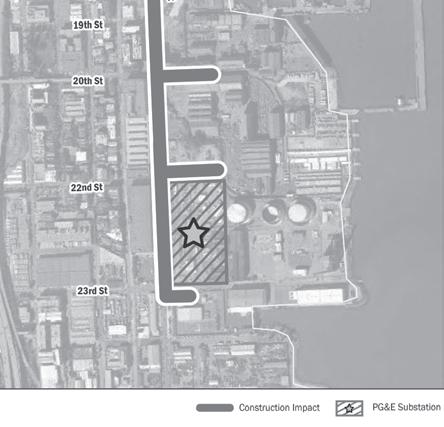


Illinois Street substation. However, Sheehan stressed that the line will belong to SFPUC, which’ll interface directly with hydroelectric customers.
“In addition to putting in the
The Bay Corridor transmission line will principally serve customers in District 10, which, according to Sheehan, includes neighborhoods that’d historically been under the shadow of the polluting Potrero and Hunters Point power plants. The work will mainly involve putting in a conduit, or tube, through which the high voltage transmission line will run. SFPUC will coordinate with PG&E to connect the transmission line to the investor-owned utility’s SFPUC continues on page 17

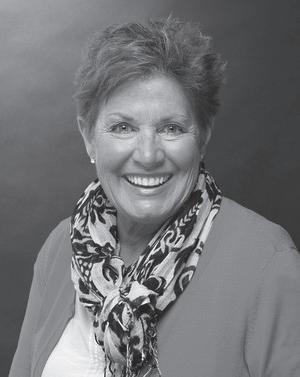
The Potrero Hill Neighborhood House, often called “the Nabe”, had some vacant space at its 953 De Haro Street location. According to Edward Hatter, executive director, a youth substance abuse counseling program that’d been operating from the building shutdown three years ago due to lack of client enrollment, leaving several rooms underutilized. About a year ago, the area was rented to Piper, a technology startup that produces instructional computer kits that help children gain science, technology, engineering and math skills.
“They’ve been wonderful tenants, and have been growing by leaps and bounds,” said Hatter. “They’ve doubled in size over the past year, but there has been no strain on the House because they are wonderful folks. In terms of the collaboration, it has been a godsend. It’s been an opportunity to expose low-income children to coding and the whole technology world.”
Rental revenue and facility assistance has been a boon to the Nabe. The organization had been paying $1,000 a month for internet service through TelePacific. Piper found a better deal with Comcast, lowering the expense to $300 per month. The relationship between the two entities grew when youth participating in the Nabe’s “Summer in the City” and other enrichment programs began beta testing Piper products.
Piper’s kits consist of a wooden box filled with electronic components, such as LED lights, buttons, switchers, and a LCD screen. It’s also equipped with a Raspberry Pi, a minuscule, fully functional, computing device geared towards use in learning environments, such as schools, to help kids learn programming. A blueprint is provided
that challenges users, aged eight to 14, to setup the computer and explore programming it through projects and games. The kits are designed so that adult supervision is optional; participants follow detailed instructions that require thoughtful engagement and persistence to be successful. The gear helps youth develop problem solving and computer engineering skills.
“It’s like a sandbox environment for tech,” said Tommy Gibbons, Piper’s head of customer experience. “They’re going to be challenged and frustrated, but that’s part of the engineering process.”
Piper’s founders – Joel Sadler, Mark Pavlyukovskyy and Shree Bose – aware of how young children are increasingly exposed to technological devices, created Piper so that today’s youth can grow up understanding how the devices they use work, while providing a foundation for science, technology, engineering, and math (STEM) skills, important to the modern economy. About 20,000 kits have been sold to customers around the world, mostly to schools, educational camps and families. The kits cost $299, though schools are offered a discount if they purchase multiple sets.
“There are kits in many Bay Area schools, and we also run an afterschool camp at Marshall Elementary,” Gibbons offered. “Word of mouth has been a major component of our marketing. We’re big in places like Scandinavia, Japan and Australia that are forward thinking in tech.”
This past summer, TechCrunch reported that Piper received $2.1 million in investment from Princeton University Alumni, Entrepreneurs Fund, Reach Capital, 500 Startups, FoundersXFund and other sources.
PIPER continues on page 15
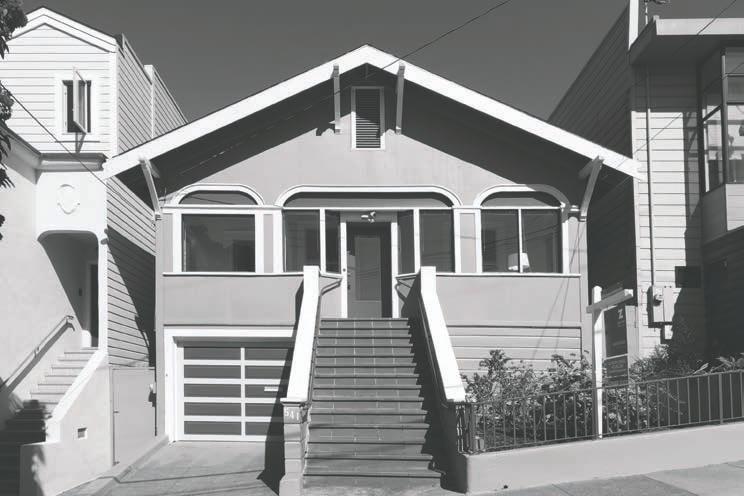
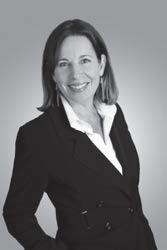
As its name suggests, the feminist group/women’s circle, Seismic Sisters, wants to make a rumble. Started on Potrero Hill in 2012 by Kim Christensen, the group meets monthly or so to socialize, support one another, and engage in political activism. It consists of Christensen’s friends, as well as friends of her friends. Despite spreading solely by word of mouth – Seismic Sisters has no website, nor social media presence – events regularly draw upwards of two dozen women. In the past year, the number has swelled to 40; Christensen invites as many as 100 females to events via evites.
“It’s grown organically, through connections that I’ve made and through friends who bring someone else,” she said. “It’s just me and my friends, and that’s how I want to keep it. It fits my style and what I enjoy, and if I’m not enjoying it, I’m not going to do it.”
The exclusivity of invitations doesn’t translate into homogeneity, however. Participants are single, married, mothers, gay, straight, bisexual. They include authors, activists, business owners, nonprofit leaders, technology workers, and others, ranging in age from their 20s to 70s.
“One of my goals was to make it intergenerational, to have a variety of age groups, because everyone is bringing something to the table,” Christensen said. “The younger women bring a new, fresh perspective, and older feminists act as mentors. It’s a great combination.”
Christensen started the group because she saw progress being made in terms of gay marriage and legalizing marijuana, while women’s rights – including related to abortion and reproductive rights – are under fire. It appeared to her that women’s steady
advance peaked in the 1990s, and has been largely stagnant since then. Over the past 20 years, instead of seeing women continue to rise throughout society – in politics, business, advertising, engineering, tech – the gender still generally fills less than 20 percent of senior management or executive positions, where key decisions are made. To influence policies, women’s representation on boards must be at least 30 percent, according to studies published over the last 15 years in such journals as The Financial Review and Management Science
“The gas seemed to have gone out of the women’s movement, and I thought it was time to recharge it,” she said. “I thought, ‘Let’s get the band back together,’ so to speak, and this time make it a big marching band.”
The “marching band” came together at the Women’s March last January.
“It was an incredible time, when moms and daughters came together,” Christensen said. “Even sons were there standing up for women’s rights and saying ‘This is unacceptable’ and doing political activism together. It’s sad we have to do this, but I noticed it was really meaningful marching together.”
Seismic Sisters has attended the annual lunch hosted by Emily’s List, a political action committee, and holds “ballot and brunch” gatherings, where members divvy up the ballot, research an initiative, and report back to the group on findings and voting recommendations. Politics is a strong focus for the band, which works to increase women’s presence by supporting not only Emily’s List, but Emerge, a California group that trains women on how to run for office. Earlier this year, Christine Pelosi, daughter of Nancy, ran a political bootcamp for Seismic
SISTERS continues on page 19
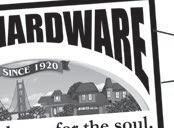




Flight path information is providedbelow, and on the map. Given wind conditions in the area, the majority of flights would use the primary arrival and departure route and the alternative departure routes, with flights arriving from and departing over San Francisco Bay:
• There will be no arrivals from or departures to the south toward Dogpatch neighborhood residences.
The helicopter flight path to the University of California, San Francisco’s Mission Bay campus was altered this past summer due to construction activity at the Chase Center, the site of the Golden State Warriors’ new home. However, after a decade of community debate about noise and potential crashes leading up to the helipad opening along with the UCSF Medical Center in 2015, the helicopters have barely drawn attention since. The new path has largely gone unnoticed.
“Ten years ago, the talk about it was really alarming, so people were upset,” said Mikael Wagner, a Dogpatch community representative on the Helipad Advisory Committee. “But we thought we’d give it a chance, and then we didn’t really hear it when it came. Also, we talked about it and we decided it is really about saving lives and we thought that was more important for the community.”
The previous flight path called for helicopters to arrive from the east over 16th Street from the Bay to the Medical Center’s northwest corner. The deviated pattern has them flying over Mission Bay Boulevard, hugging Route 280 and approaching the Center from the west, departing along the same path. The alternative route was part of the Federal Aviation Administration-approved proposal when the helipad opened.
According to Michele Davis, UCSF spokesperson, the route change was prompted by several towering cranes at the Warriors site, which is east of the Medical Center, between 16th and South streets. “Prior to this construction activity, and after completion, we anticipate resumption of the primary flight path to and from the east,” she said.
When the helipad became operational, UCSF promised that noise wouldn’t rise above 95 decibels outside and 80 decibels indoors. That’s slightly


• Primary arrival and departure route − helicopter arrives from the east and departs to the east the Bay.
gencies during flu season,” said Davis.
• Alternative departure routes − helicopter arrives from the east and departs to the north turning east; or helicopter arrives from the east and departs to the west before turning north then east.
louder than airplanes that pass over Mission Bay, but on par with motorcycles and louder trucks. UCSF offered to pay for sound reduction inside the homes of nearby residents if levels were to reach those numbers. Community members had until July, 2016 to request a test. According to Davis, no applications were filed.
The current path takes copters over offices and the Family House, which provides housing for relatives of hospitalized children. Employees at two restaurants located along the primary path, STEM Kitchen and Garden and Mission Rock Resort, told the View that the helicopters have been heard, but aren’t bothersome. A visit to the area revealed that, in the daytime at least, noise from construction machinery and generators at the Chase Center, UCSF and a new housing development to the south of the hospital masks sounds from helicopters.
The helipad was primarily established for emergency transport of children and pregnant women to Benioff Children’s Hospital, located at the southern wing of the Medical Center. Davis said those conveyed by air have included a child with a heart defect that required immediate surgery to survive; a child in septic shock and organ failure who could’ve otherwise died within hours; and a pregnant woman with life-threatening preeclampsia. The helipad isn’t used for trauma transport, such as car accident victims.
UCSF has just one helicopter in its fleet, painted red, white and baby blue and dubbed “Bear Force One.” It’s the only emergency copter in use in San Francisco. The San Francisco Police Department shut down its aerial division after crashes in the 1970s and 1990s. However, UCSF partners with other aerial medical transport companies, including REACH, MedTrans and CALSTAR, which access the helipad.



The helipad is open 24 hours daily, with an average of one to two flights per day. “Although there are days when there are no flights, during the winter months we seem to experience an increase due to the high number of children suffering respiratory emer-
Bear Force One is an EC-135 twin-engine model manufactured by Eurocopter, a French/German company. The EC-135 is popular worldwide
• Secondary arrival and departure route − helicopter arrives from the east and departs to the used only in unusual circumstances when wind patterns require departure to the west.


HELIPAD continues on page 15


When Vermont Street resident, Louis Epstein, was a child in the early 1940s, he lived in the Mission, on Peters Avenue. He remembers the commonplace sight of cobblestones lining the middle of San Francisco’s many hilly streets. Cobblestones were frequently used as paving material before the dominance of automobiles. They provided more traction to horse-drawn wagons than smoother surfaces. In older American cities – San Francisco, Philadelphia, Chicago, New Orleans – old cobblestones are often revealed when modern pavement wears down and cracks.
Epstein rarely gets a glimpse of the cobblestones he viewed as a youth, except in select spots in some northside neighborhoods. However, this past summer a crew of construction workers were conducting boring and excavation work on the 600 block of Vermont Street in preparation for repaving, and cobblestones were found beneath the asphalt.
“I took an interest in the fact that they were boring outside of my street,” said Epstein. “They’re going to be repaving the street, so the City came and bored into the street and found cobblestones underneath. People think of them as being fancy and attractive, and so they take them to fancy neighborhoods north of Market. If they’re found in Potrero Hill they should stay, just as if it were Telegraph Hill.”
Epstein explained that the work crew told him that the stones would be taken to a store yard before being transported elsewhere in the City, such as to North Beach, where they’re desired for ornamental value. Epstein believes that the cobblestones found on his block are just the tip of the iceberg, and that layers of cobblestones likely exist on many of the Hill’s steep streets.
A View reporter witnessed a similar scene last summer, in which cobblestones were found during roadwork on Dorchester Way in West Portal. In that case, work crew members said they were unaware of what’d be done with the stones.
A 2010 Department of Public Works order established procedures for recycling cobblestones found during excavations. According to the guidelines, stones should be cleared from the worksite, cleaned and carefully stored at the Cesar Chavez Street Yard, located at 2323 Cesar Chavez Street. The instructions don’t specify what should be done following storage. However, Public Works personnel said that the Cesar Chavez Street Yard is full; stones are now being taken to a Treasure Island facility.
According to Rachel Gordon, DPW’s director of policy and communications, the cobblestones are rarely reused unless there’s a project with a landscape component designed to incorporate them. “As for use, our streetscape projects are designed by


a design team, usually a landscape architect, and in consultation with the community. If there is a desire for cobblestones, we will assess the feasibility of use and the maintenance needs. In general, we do not use cobblestone anymore for roads, but we do occasionally use them for planters, curbs, medians, et cetera,” Gordon added.
According to Epstein, the City at one time had a practice of dumping cobblestones at China Beach to serve as wave breaks. He no longer knows if that’s the case, but speculates that cobblestones are increasingly ending up in the hands of private owners who covet their historical nature and ornamental value.
Numerous building supply companies around the country sell cobblestones for home improvement and other projects. Some have products labelled “San Francisco Cobblestone,” which occasionally means that stones with no historic value have been modeled to appear old and rustic. Other companies sell “authentic” cobblestones from city streets of past eras. According to Ed Dunn, executive director of Building Resources, located at 701 Amador Street, the organization intermittently sells cobblestones for $2 each.
“We get cobblestones in from smaller-scale sources and sell them to the public,” said Dunn. “Sustainable Crushing, owned by Recology, takes all the rock and concrete that’s excavated and grinds it to have ready for fill-type uses. I imagine that they have received cobblestones, but don’t know what they do with them. DPW delivers to them, as well as private haulers. When a private property owner has a small truckload, the stones come to us.”
A Recology employee stated that 99 percent of the time cobblestones that reach the Sustainable Crushing facility are crushed. However, if there’s space to store them a pile will accumulate until someone purchases them at a cost of $300 a ton.
More aged City stones may become available for reuse in coming years. According to an August article from NextCity.org, a Market Street improvement project will make a stretch of road more conducive to travel by people with mobility challenges by replacing old brick sidewalks. Due to wear and aging, the bricks have become uneven and slippery when wet, deemed noncompliant with the Americans with Disabilities Act.
Jim Campbell, a contemporary artist who specializes in works featuring LED lights, has been a De Haro Street resident since 1987. Originally from Illinois, Campbell moved to California in the 1970s, and pursued an engineering career in Silicon Valley for 25 years. According to Campbell, his artistic career emerged during those years, but had its inception when he was a Massachusetts Institute of Technology engineering student. While at MIT Campbell pursued filmmaking and photography as “An outlet from the neuroticism of engineering.”
In 1988, Campbell and local artist, Jai Waggoner, held a joint show on the theme of mental illness at a Tenderloin art gallery. He was approached by a
San Francisco Museum of Modern Art representative, who invited him to take part in a group exhibition at the museum.
“I went from having never been in a show to being part of a group show at the Museum,” Campbell said. “I gradually started doing more work. My artwork has gone through a couple different phases. I worked on interactive art, and around 2000 got more interested in perception; understanding and revealing how people see things.”
Campbell’s art career grew in the years following the SFMOMA show. During that time, his De Haro Street home and a renovated garage served as his art studio. About 12 years ago, he and his wife, Tessa Wilcox, adopted
CAMPBELL continues on page 17

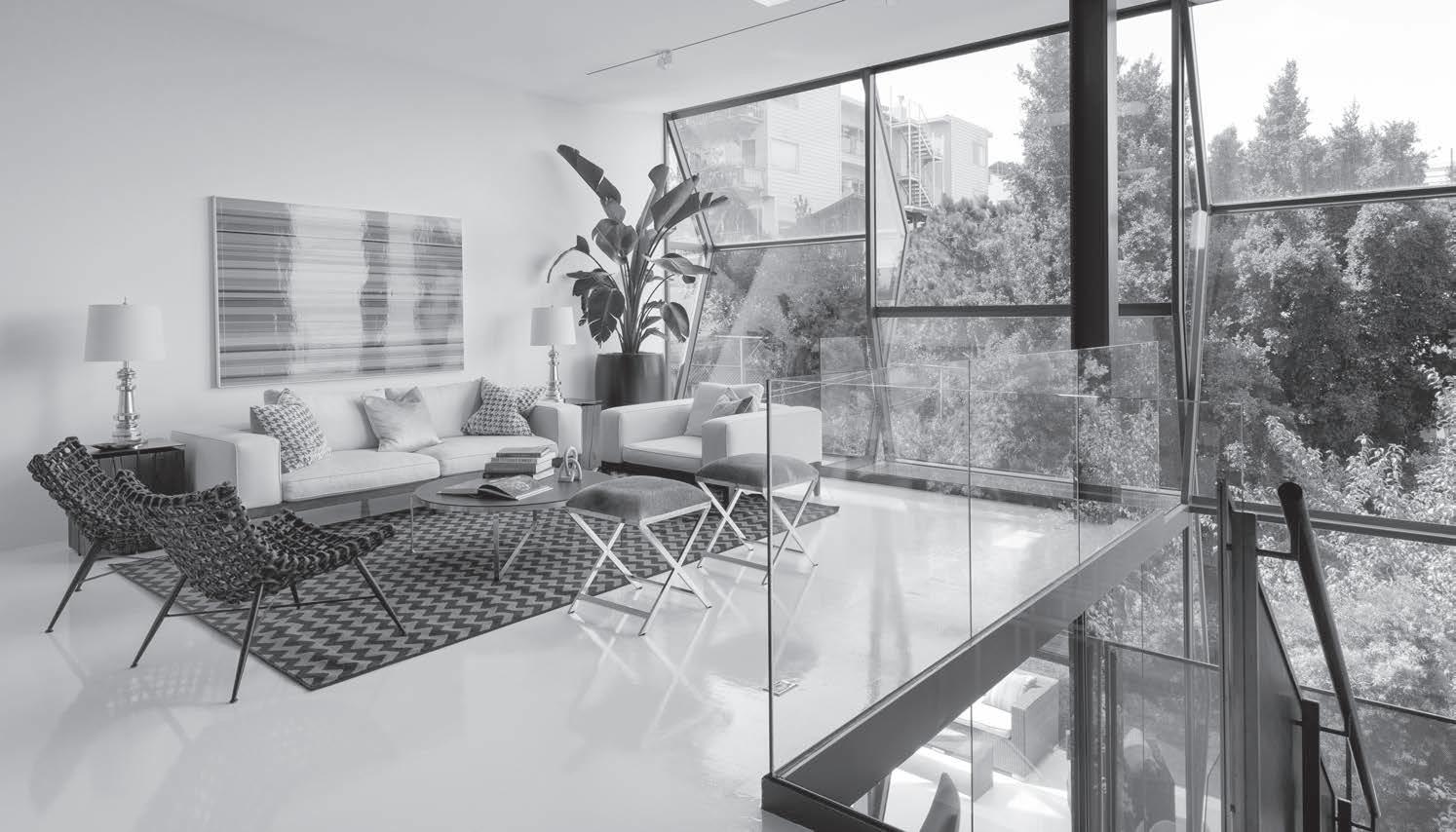
If

If you walk by quickly you might not notice anything different about Christopher’s Books. It’s still a gem of a neighborhood bookstore, that’s graced the 18th and Missouri streets corner for more than 25 years. Stop and look closely, however, and you’ll see two new paintings in the windows.
After thinking for a long time about adding art to the window displays, Tee Minot, Christopher’s Books’ owner, enlisted the services of neighborhood artist, Brenda Cole Seymour, co-owner of Mural Arts, to paint two shelves filled with books.
“You’d be surprised at how fast books are damaged when hit by the sun,” said Minot, “so I’ve always wanted something in the display that would hold up against sunlight. At the same time, I wanted to bring the display to life and make it more interesting and fun to look at.”
Minot sought to include a range of titles by authors who represent different perspectives and cultures in the artwork. She picked literary classics like Fahrenheit 451, by Ray Bradbury; Invisible Man, by Ralph Ellison; and Frankenstein, by Mary Shelley, as well as books by local authors and longtime friends of the store, including Lost Cat, by Caroline Paul; Meanwhile in San Francisco, by Wendy MacNaughton; and La Maravilla, by Alfredo Veá.
Some of Minot’s personal favorites are featured, including The Wind-Up Bird Chronicle, by Haruki Murakami; Angle of Repose, by Wallace Stegner; and The Last Report on the Miracle at Little No Horse, by Louise Erdich. As part of the design process, Minot invited Christopher’s Books’ staff to provide input into the books they’d like to see in the paintings.
Once the list was finalized Minot left it to Seymour to create the art. In addition to depicting interesting book jackets in the paintings, Seymour highlighted a handful of additional items. She included a photograph of Jack London, because she once painted a faux bookshelf filled with his books for a coffeeshop in Berkeley, and loved his books when growing up. She also created a portrait of Mary Ann Evans, known more famously by her pen name, George Eliot.
While working on the project Seymour was reading The Invention of Nature: Alexander Von Humboldt’s New World, by historian Andrea Wulf, about an influential scientist and naturalist who warned about climate change in the 18th century. She included a grasshopper and butterfly in the painting in honor of Von Humboldt.
Adept at working in different styles, Seymour was inspired during the creation of the paintings by 19thcentury trompe l’oeil master, William Harnett. “I’ve always admired his art,” said Seymour, “and sought inspiration from his work while painting the bookshelves.”
Alongside her husband and artistic partner, Les Seymour, Seymour has created art for hundreds of homes and commercial spaces around the world, including massive artworks for places like Caesars Palace and Shanghai Disneyland. She takes satisfaction in seeing her painting on display near her Potrero Hill home.
“Living and working here for more than 30 years, it’s nice to paint something special in our neighborhood,” said Seymour. “I’m also thankful for this project because it introduced me to many new books. I now have an amazing reading list from Christopher’s Books that will

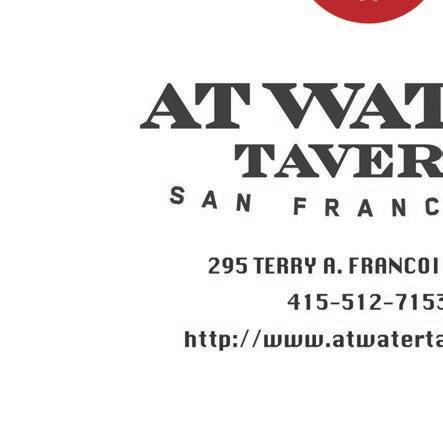
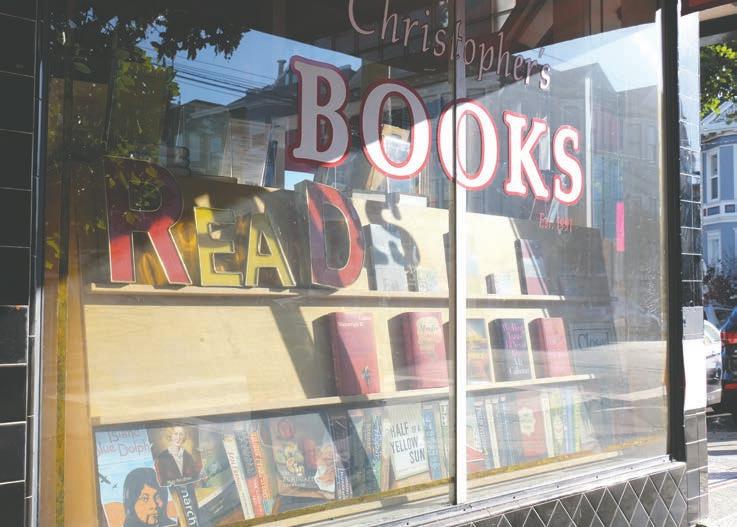
keep me busy for years!”
Minot looks forward to having conversations with fellow book lovers about the paintings. She knows the art will spark conversations about the volumes depicted in the window displays, as well as titles that were omitted.
“I love the paintings,” she said.
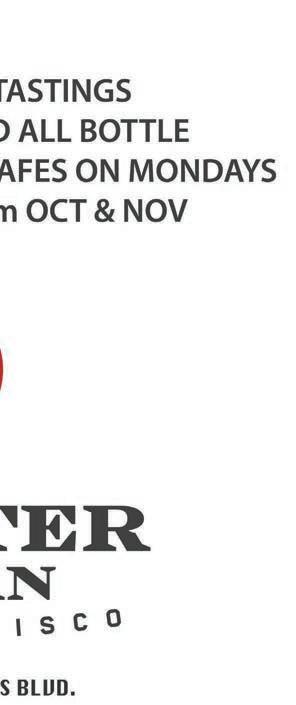

“I should have done this twenty-five years ago.”
Greg Roensch is a writer and Potrero Hill resident who owns an editorial services business. He recently published “Breakfast with the Alien and Other Short, Short Stories,” available at Christopher’s Books.


In October, an uncontested slate of five candidates was unanimously approved by Dogpatch Neighborhood Association (DNA) members to serve on the group’s board of directors. Bruce Kin Huie, an account director at the marketing firm, Pedowitz Group, will serve his second two-year term as president. He’ll be joined by fellow returning incumbents Jared Doumani, DNA’s treasurer, and Vanessa Aquino, its secretary and membership coordinator.
Doumani, a Tennessee Street resident, owned the house-painting business Persnickety Painters for 14 years, and manages a real estate partnership. Aquino is an artist and arts promoter who has organized the annual Dogpatch Block Party, most recently last May.
Susan Eslick – who serves as treasurer for the Dogpatch & NW Potrero Hill Green Benefit District – was elected vice president. Heidi Dunkelgod, a designer and lecturer at San Francisco State University, was chosen as member-at-large. Exiting amicably are former board members Celia Lawren and Mc Allen.
Through meetings and negotiations, the Dogpatch Neighborhood Association advocates for local construction and improvement projects that comport with the community’s collectively articulated needs. By its own description, it was “established to monitor issues relevant to the neighborhood and to encourage thoughtful and visionary urban planning that respects, celebrates, and preserves the character, integrity, and quality of life of the area as it evolves for the 21st Century.”
The association meets on the second Tuesday of each odd-numbered month. Membership is open to anyone who lives or works in Dogpatch and costs $25 annually for an individual. Earlier this fall, DNA lent its support to the building of a new Navigation Center on 25th Street.
According to Huie, the best part of serving as DNA president is that “I get to meet a lot of my neighbors.”
Aquino added, “I love my community. I want the best for everyone. I’m lucky to be surrounded among great neighbors who are willing to make a difference.”


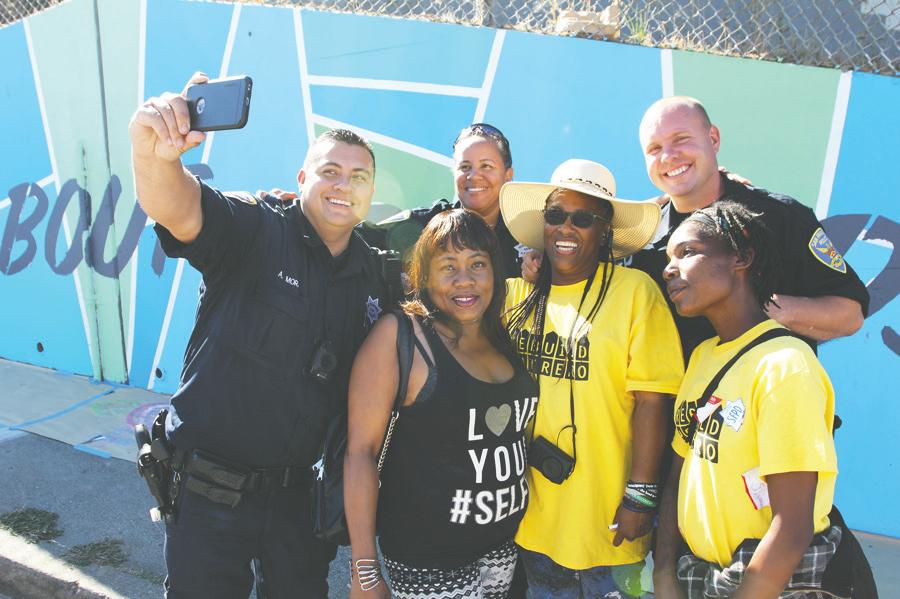
A MONTHLY UPDATE
SPONSORED BY BRIDGE HOUSING
VOLUME 86 • NOV 2017

Come see the beautiful new mural and enjoy an afternoon of food, fun, and games at the next Rebuild Potrero community event:
Unite Potrero: Mural Unveiling & Block Party, November 4, 2017 11am – 2pm, Missouri St. between Turner Terrace and Watchman Way.
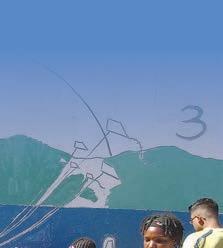

This event is part of a larger initiative that BRIDGE Housing has been working on in partnership with Potrero community members, SF Planning Department, SF County Transportation Authority, Fletcher Studio, SF Metropolitan Transportation Authority (MTA), SF Housing Authority, and 1Brush Initiative. The project consists of temporary roadway and public space improvements to enhance pedestrian safety and provide new community gathering areas. This work is being implemented in response to community requests for immediate pedestrian safety improvements during the Rebuild Potrero construction. Implementation started on October 7, 2017 with the mural installation, which is both a beautification project as well as a traffic-calming measure. About 100 Potrero Hill residents, young and old, wielded a brush to paint the mural. The message of that day, and the overall theme of the mural, is “It’s All About the Kids”. In fact, the mural location was chosen because it is along the Walking School Bus (WSB)

Community: Annual Festival of Altars Día de los Muertos is a traditional Meso-American holiday dedicated to ancestors, honoring death and the cycle of life. In Mexico, neighbors gather in cemeteries to share food, music, and fun with their extended community, living and departed. The celebration acknowledges that we have a relationship with our ancestors and loved ones that’ve passed away. Bring flowers, candles and mementos of loved ones to place on public altars, 4 to 11 p.m., Garfield Park, 26th and Harrison streets. Procession begins 7 p.m. at 22nd and Bryant. This is an alcohol free event. For more information: http://bit.ly/2xWejKO
2 3
11/2 Music: Amalgamation Amalgamation performs a stripped down set of Americana/Blues/ Alt-Country tunes consisting of vocals, duo acoustic guitars, harmonica, and kick drum for the beats. Think foot-stomping tunes inspired by the likes of Jack White, Alabama Shakes, Johnny Cash and Rosetta Tharpe. 7:30 to 9 p.m. Farley’s, 1315 18th Street.
Community: Timbuk2 Free Factory Tour
Born in San Francisco, Timbuk2 has been making high quality bags in the heart of the Mission District since 1989. Visit the Timbuk2 factory and headquarters for a 60-minute behind-the-scenes look at product design, marketing, and the office
Open Thanksgiving Day 7:30am-2pm
Every year, we share our good fortune by donating all of your tips on Thanksgiving Day to the SF Food Bank. Stop in and help us help our neighbors.
gong, disco ball, and kegerator.
11 a.m., first Friday of the month. Tours limited to 20 people. Free; but tickets required. Timbuk2 Factory Store, 587 Shotwell Street. For tickets and more information: http://bit.ly/2hVpy06
4
Community: Potrero Hill History Night
Join neighbors for dinner and a program featuring longtime Potrero Hill residents. Pizza and desserts for sale; proceeds benefit Downtown High School. Enjoy presentations by Eileen Bray (“Six Generations on Mississippi Street”) and Jon W. Smith (“Sixty-Two Years on Wisconsin Street”). Dinner:
5:30 p.m. Free Program: 7 to 9 p.m. Downtown High School, 693 Vermont Street. Parking available in schoolyard on Kansas Street between 18th and 19th streets. For more information: 415.863.0784.
11/4 Health: Bay Area Food Allergy Walk 2017
The FARE (Food Allergy Research and Education) Food Allergy “Heroes Walk” recognizes the courage and determination of food allergy families. Through fundraising and walks across the country, thousands of families unite behind their commitment to FARE’s mission, and raise funds for research, education, advocacy, and awareness. Check-in and activities: 9 a.m.
Walk starts: 10 a.m. Leo Ryan Park, 650 Shell Boulevard, Foster City. To register a team, and for more information: http://bit.ly/2wJWvXv
Art: Free Admission Day at Museum of Craft and Design
Enjoy free admission to the Museum of Craft and Design on the first Tuesday of every month. 11 a.m. to 6 p.m. 2569 Third Street. For more information: http://bit.ly/2hVUvBu
11/7 Photography: Ivan Bajinov
This art opening will showcase Ivan Baginov’s photographs of City life. 7 to 9 p.m. Farley’s, 1315 18th Street.
Music: Daniel Berkman
Potrero Hill resident Daniel Berkman is a composer, multi-instrumentalist and innovator of the kora, a 21-stringed harp/lute from West Africa. 7:30 to 9 p.m. Farley’s, 1315 18th Street.
Music: Bum Wagler & The Tune Wranglers
Live music by Bum Wagler & The Tune Wranglers, who play original tunes in the Honky Tonk country vein. 7:30 to 9 p.m. Farleys, 1315 18th Street.
7 8 9 10
Fundraiser for Victims of Recent Disasters in The North Bay and Puerto Rico Dancing music by Sang Matiz; Afro Latin funk. Food and drink specials. 5 to 9 p.m. Recommended donation $10 to $20 at the door. The Ramp Restaurant, 855 Terry A Francois Boulevard. For more information: 415.621.2378
Books: San Francisco Public Library’s $1 Book and Media Sale
Pickup choice books and media at unbeatable prices, just one dollar each. Sale proceeds support the San Francisco Public Library. The Book Donation Center, 1630 17th Street. Every second Saturday, 10 a.m. to 2 p.m. For more information: http://bit.ly/2zs6mhM
11/11 Gardening: Plants Sale
Learn about sustainable living, feed the goats, meet the roosters, bring your kids, and start a garden. Fall is the start of planting season for drought-resistant native vegetation. Bay Natives Nursery, 10 Cargo Way. For more information: http://bit. ly/2zrc0AI
11/11 Science: Discovery Day at AT&T Park
AT&T Park will be transformed into a science wonderland for the seventh annual concluding event of the Bay Area Science Festival, a free extravaganza. In 2016, more than 30,000 people enjoyed a non-stop program chock-full of interactive exhibits, experiments, games, and shows, meant to entertain and inspire. With more than 150 exhibits, everyone can find something that’ll unleash their inner scientist. 10 a.m. to 4 p.m. Free. AT&T Park, San Francisco. For more information: http://bit.ly/1xIY3qy
11/11 Art: Introduction to Encaustic Collage
Join instructor Ann Brinkley for an introduction to encaustic painting and working with beeswax medium.
12:30 to 4:30 p.m. $135. Arch, 10 Carolina Street. Class size limited. For more information and to register: dcenter.org/wax
Film: CatVideoFest 2017
CatVideoFest 2017 will feature 80 minutes of footage of your favorite internet cat videos on Yerba Buena Center for the Arts’ big screen. Arrive early to partake in cat-themed activities. Stay afterward for their Happy Meow-hour. CatVideoFest was founded by filmmaker Will Braden, creator of YouTube sensation Henri,
le Chat Noir and curator of the popular Internet Cat Video Festival. A portion of ticket proceeds will go to the San Francisco Society for the Prevention of Cruelty to Animals. $12. 2 p.m. YBCA, 701 Mission Street. For more information and to purchase tickets: http://bit. ly/2yFE4D0
Community: San Francisco Public Library Service
Hours
The Library is undergoing a required five-year assessment of its accessibility, with 11 public hearings; translators and closed captioning available. 6:30 p.m. Bayview/ Linda Brooks-Burton Branch, 5075 Third Street. For more information: 415.557.4277 or visit http://bit. ly/2yHXcjY
Art and Science: Cooking Contraptions
How does food inspire you? Do you find artistic vision in vegetables, or enjoy the science behind sous-vide? Encounter an array of cooking-inspired presentations and gain a deeper understanding of the tools in your kitchen. Play with your food, experiment with modernist inventions, and explore tricks of trompe-l’oeil, automata, and edible art. 6 to 10 p.m. Adults 18+ only. $17.95 advance; $19.95 at the door. Exploratorium, Pier 15. For more information: http://bit.ly/2yFe4HP
Holiday: Embarcadero
Building lighting
Enjoy a winter fireworks display and a free Disney on Ice performance on the outdoor ice rink in Justin Herman Plaza during Embarcadero Center’s 31st Annual Building Lighting Ceremony, when more than 15,000 lights illuminate the San Francisco skyline. Free. 4 to 7 p.m. Justin Herman Plaza. For more information: http://bit. ly/2gl0Ckv
of his evolving ex-patriot life in Paris, using his perplexing experiences in apartment renovation as a launching point for stories about French culture, food, and what it means to revamp one’s life. Includes dozens of new recipes. Lebovitz will speak for a few minutes and sign books purchased at Omnivore. 3 to 4 p.m. Free. Omnivore Books, 3885a Cesar Chavez Street. For more information: http://bit.ly/LvOKYY
11/18 Art: Relief Block Printing
Learn the art of relief printmaking with Megan Adie, create a set of finished prints, and be ready to take on new printing projects. 1 to 4 p.m. $65. Arch, 10 Carolina Street. For more information and to register: dcenter.org/print
11/18 through 12/17
Theater: The Great Dickens Christmas Fair
“The Surprising Tale of Baron Munchausen and Mopsa the Fairy: or how Munchausen, Jack and Mopsa the Fairy, defeat evil Queen Edwina Picklewurst and save Fairyland,” will play at the Victoria & Albert Bijou Music Hall at the Dickens Fair during The Great Dickens Christmas Fair. Cow Palace Exhibition Halls. For details on show times, ticket prices and other information, visit the Dickens Fair website: https:// dickensfair.com/entertainment
Music: 2017 Bay Area Records Fair
health history questions on the day of your appointment. Identification required. 10 a.m. to 4 p.m. American Red Cross Bay Area Chapter Office, 1667 Market Street. For more information regarding eligibility to donate blood: 1.866.236.3276. To schedule your appointment: http:// rdcrss.org/1s0EJ3D
11/22 Thanksgiving: Community Dinner
Join Community Awareness Resources Entity (C.A.R.E.) for its fourth annual Community Thanksgiving Dinner and Barbeque Cookoff with C.A.R.E. and Bayview Station officers. Food, face-painting, music, bouncy house, friendly neighbors and good old-fashioned fun. No alcohol or dogs. 10 a.m. to 3 p.m. Potrero Hill Recreation Center, 801 Arkansas Street. For more information: 415.658.7203; 415.368.4436.

Music: Soul Delights Come for a lively performance. 7:30 to 9 p.m. Farley’s, 1315 18th Street.
12/2 Holiday: Deck the Dogpatch
Enjoy holiday cheer at this selfguided shopping, food and drink tour of Dogpatch, with popups throughout. 10 am to 6 pm. From Third and 19th to Indiana and 26th streets.
Books: L’Appart: The Delights & Disasters of Making My Paris Home Bestselling author and worldrenowned chef David Lebovitz continues to mine the rich subject
The 2017 Bay Area Record Fair is a celebration of the unique music scene in the Bay Area. Free entry after noon. $5 Early Bird Tickets gets you into the record fair at 11 am, an hour early, so you can be the first to dig through the crates without the wait and crowds. 2174 Market Street. For more information and early entry tickets: http://bit. ly/2yKwnvP
Health: American Red Cross Blood Drive Give blood. Help save lives. Streamline your donation experience by visiting RedCrossBlood.org/RapidPass to complete pre-donation reading and








Federal Bureau of Investigation inquires, election scandals, Presidential corruption. Sound familiar? Mark Felt: The Man Who Brought Down the Whitehouse, helps viewers relive a moment in history that today seems almost quant compared to current political shenanigans.
Mark Felt is better recognized as the FBI whistleblower, “Deep Throat,” responsible for exposing what became known as the “Watergate scandal,” which helped bring about the end of the Nixon Administration in the early-1970’s. Mark Felt, the movie, is
timely, enjoyable and interesting. In it, Liam Neeson, starring as Felt, utters the notable line, “Mr. Nixon, I have a very particular set of skills…” and provides viewers with a look at the Watergate scandal from inside the FBI.
Set to a score that maintains a feeling of mounting breathlessness, the film follows Felt as he fights to preserve one of the most important intelligence operations in American history amidst growing White House corruption, censorship, and influence over the Bureau. The tension is amplified as Felt grapples with the FBI’s investigation into the Weather Underground counterculture group, including a Pentagon

bombing, his own desperate search for his daughter, and ghosts from his and the Bureau’s dark, not so distant, past under former Director J. Edgar Hoover.
Before shifting to films, the movie’s director, Peter Landesman, worked as an investigative journalist for many years. Landesman was at a bar with a
friend in 2005 when he learned that Felt had revealed himself to be Deep Throat in a Vanity Fair article. Landesman was shocked that the public’s reaction to the revelation, which had withstood more than three decades of intense curiosity
FILM continues on page 17

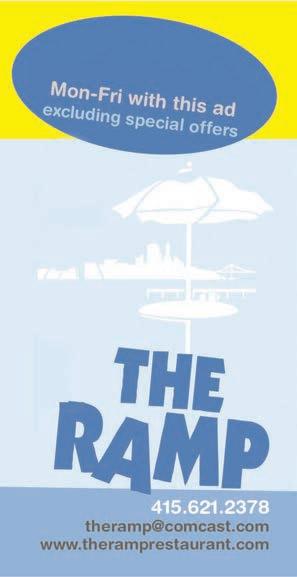










In October, my day in and around Dogpatch included an afternoon walk along Mission Creek, guided by informational placards known as the Mission Creek Signs, which were made by schoolchildren to increase awareness of local wildlife. This month, I took a closer look at this aquatic habitat, thanks to the Campus Life Services’ Outdoor Programs at the University of California, San Francisco, which, in addition to hiking excursions, camping trips, and standup paddle boarding, offers group kayaking adventures from the UCSF Mission Creek Boathouse at 400 Berry Street.
UCSF’s programming is open to the public for a fee, campuslifeservices. ucsf.edu. My wife’s affiliation with the hospital got us into a two-person kayak for free on a foggy morning that gradually cleared up once we got out on the water. I can hardly think of a nicer way to start one’s day in San Francisco. The trip was loosely guided by a group of students from UCSF’s physical therapy school, who gave instructions and occasionally checked in with us along the route. Mostly, we were free to paddle around and admire the birds, boats and light on the water. Alongside 20 or so other kayakers, we looped up and down Mission Creek, ventured past McCovey Cove and out onto the Bay for a view of the Downtown skyline, and then circled back through South Beach Harbor, next to the ballpark. Not a particularly arduous journey; just enough exercise to put us in the mood for lunch.


Lately, I’ve been getting burritos from the Buena Fe Taqueria truck, at 16th and Mississippi streets. I’m not sure when, exactly, this truck materialized in our neighborhood –sometime earlier this year – but it’s typically parked at Potrero Hill’s northeastern corner from about 10 a.m. to 6 p.m., serving traditional taco truck fare. Their burritos are robust constructions. Although the meats are all tasty, I most often order the camaron (shrimp).
Next, some culture. On the opposite end of the Hill’s northern border is the Catharine Clark Gallery, at 248 Utah Street, which until November 11 is running Hollow and Swell, by New York artist Chris Doyle. It’s free to see, and I’m glad I went. The well-known gallery was, by its own account, “the first commercial gallery in the area with a dedicated media room,” which it puts to use for Hollow and Swell, whose centerpiece is a ten-minute animation based on The Course of Empire, the 19th-century series of paintings by Thomas Cole of the Hudson River School.


Cole charted civilization’s progression from agrarian to urban life, and then imagined its collapse. The artist’s fatalistic depiction of human ambition begins amid unspoiled natural beauty. By the end, nature has reclaimed the fallen shards of an overpopulated and chaotic city. Doyle’s work – a fantastical depiction of today’s built environment – complicates Cole’s neat narrative. It’s no longer so easy to tell where we’re headed, or to distinguish progress from self-ruination. The metropolis of Doyle’s imagination has a bright Candyland quality that exerts an immediate visual appeal, but it’s a
troubling place, in which the line between reality and digital imagery has started to blur. An electronic billboard may display a fully lifelike picture of a forest, but the physical materials of the construction industry have become unreal, Tetris-like, blocks that turn traditional townscapes into video game worlds.
At one point, a hamlet of cozy single-family homes is suddenly uprooted and carried away, one by one, on the backs of shadowy workers. In Doyle’s video, faceless laborers are always toiling at the fringes of landscapes where they don’t seem to belong. Their work often has no clear aim. They may hammer continuously at an object to no effect. Eventually, they themselves may metamorphose into objects or – mirroring the transition back to nature in Cole’s series – into plants. Significantly, Doyle’s metropolis is surrounded and nearly engulfed by water. It’s everywhere, barely contained by a tortuous network of tubes and canals.
Rounding out the exhibition are a pair of watercolor paintings showing the pristine classical grandeur of artifacts within Russia’s Hermitage Museum; an additional triptych animation on a smaller screen; and a set of sculptures that embed digital tablets with animated displays within natural materials like branches and stones, seemingly less to emphasize contrast than to suggest compatibility. Right now, we’re in the midst of what Cole referred to as “The Consummation of Empire,” which he represented as a decadent celebration of mankind’s glory, yet perhaps none of us is actually comfortable within this stage. Doyle avoids any obvious optimism or pessimism about where we go from here.


If looking at contemporary art lends you a feeling of personal sophistication, you may, then, be inclined to have a glass of wine before dinner. Coincidentally, I recently visited Dogpatch WineWorks, 2455 Third Street, for the first time. Local oenophiles may know about it, but this urban winery strikes me as something of an undiscovered gem in the neighborhood, despite occupying a huge space in the center of Dogpatch. Principally it functions as a production facility and event space, but once a week – Sunday, from noon till six – it opens its tasting room to the public. For $22 you get a flight of six wines fermented right here in our backyard; grapes sourced from Napa and Sonoma. The reds and whites made by Dogpatch WineWorks are served only on premises; you can buy a bottle, but not in a liquor store.
Because Dogpatch WineWorks doesn’t distribute or, between Monday and Saturday, operate as a wine bar, its business model is a little complicated. Its own wines are made in quantities sufficient to accommodate the weddings that make use of its chic, barrel-lined space, and curious drop-in visitors like me. Otherwise, its equipment and grape-procurement services are hired to boutique commercial labels and for personal winemaking. On the day I checked the place out, party planners were setting up tables and decorations for an ambitious-looking baby shower, but the bartender was still kind enough to let me and my friends in for a tasting.


I’ve been wine-tasting only once or twice, but Dogpatch WineWorks replicates the wine-country experience quite well, from what I recall of it. Here, as in Napa, there’s a knowledgeable and passionate wine industry professional who pours beverages; describes them in casually informative terms; pleasantly seeks to ease your obvious insecurities regarding your lack of wine expertise and undiscerning palate; and tells you interesting facts about wine and winemaking, some of which you’ll remember. You’ll taste the wine; the wine will taste good. Why drive two hours north?
Lastly, my somewhat scattered itinerary this month takes us back to the opposite side of Potrero Hill for dinner at La Paz, an excellent, friendly, Salvadoran restaurant at 1028 Potrero Avenue. Located directly across the street from Zuckerberg San Francisco General Hospital, La Paz sits a little distant from the Mission’s Latin American culinary corridors, and makes for a wonderful spot
members include that 610 Illinois Street residents be granted Residential Permit Parking, and that SFMTA not retract any existing blocks with RPP. SFMTA is exploring RPP program modifications, including limiting the number of permits issued to one per driver, two per household. The agency also proposes to define the RPP eligibility area to roughly include large sections of Northeast and West Central Dogpatch, as well as a smaller section in the Southwest. Dogpatch neighbors don’t want any additional individual parking meters on poles, but rather pay by phone and parking station kiosks.
“We’ve been at this for about 24 months, so at some point we’ve gotta make a decision on something,” Huie stated. “We may have a difference of opinion about that decision, but for some of us we are urging the City to do something.”
“There may be a few blocks where there’s not 100 percent agreement, but that’s natural,” Willson added. “Nothing involving parking will have 100 percent agreement in San Francisco. There’s no doubt that the City is growing, with more and more people wanting to live, work and visit. We’ll be taking a holistic approach by implementing bike and pedestrian improvements, transit improvements and discussing transportation needs with the community.”
At the October DNA meeting, Andy Thornley, SFMTA senior analyst, announced that the agency will no longer pursue the paid plus permit pilot program, also referred to as the permit overlay. The pilot program would’ve implemented hybrid parking spots that combine Residential Parking Permits with paid parking. Many residents had expressed opposition to the experimental measure.
“We think it’s an interesting option that’s been done in other cities but we won’t push it in the Dogpatch,” said Thornley.
APARTMENT from front page because nothing was affordable after a breakup.
When Sara, a 28-year old woman living in the Richmond, broke up with her boyfriend a year ago, it took six months to figure out which one was going to move out of their shared apartment. Three years earlier, they’d rented a $1,000 a month studio together, prematurely she realizes now, but also unavoidable because of finances. She was working at AmeriCorps at the time, and said even $500 was a struggle. It’d taken them months to find the space and, in the end, holding onto it became a contest to determine who was more stubborn than the other.
“At first, he thought we could break up and be friends and live

Esprit Park Renovation Planning Neighbors interested in more closely following the planned renovation of Esprit Park can sign up for project updates and notices of the Green Benefit District’s regularly scheduled meetings on the project’s progress, held in cooperation with SF RecPark and the project landscape architect, Fletcher Studio. Meetings will be held approximately once a month, starting in late 2017 or early 2018, and will include updates on project details and schedule. Sign up for meeting notifications or to apply to join the Esprit Community Advisory Team at GreenBenefit.org/ esprit-signup
Potrero Dogpatch Merchant’s Association meets the second Tuesday of each month at 10 a.m. at Goat Hill Pizza, corner of Connecticut and 18th streets. Website: www.potrerodogpatch.com . Call 415.341.8949. Next meeting: November 14th.
Potrero Hill Garden Club usually meets the last Sunday of the month at 11 a.m. for a potluck in a local home or garden. We occasionally visit gardens such as Ruth Bancroft, Yerba Buena, Cornerstone, Filoli, and the rooftop garden at the Fairmont. We discuss gardening appropriate for Potrero Hill’s microclimates, and often have speakers on subjects such as drought, wind, shade, pests, and even flower arranging. For details, please contact us at Gardener@PotreroHillGardenClub.org
SOMA Rotary Club meets the second and fourth Thursday of the month at Mission Rock Resort, 817 Terry Francois Blvd. We meet at 6 p.m. for a mixer and 7 p.m. for a dinner meeting. We provide community service to the Mission Bay, Potrero, and Bayview communities. The focus is on providing services for the under-served of our community. The website is located at: www.meetup.com/Mission-Bay-Rotary-Club. For more information contact Nine at: n.ladow@comcast.net
Starr King Open Space meets for monthly Stewardship Day the second Saturday of each month from 9:30 a.m. to 12:30 p.m. at Starr King Open Space, corner of Carolina St. and 23rd St. Come out and meet your neighbors, be a community steward, enjoy the natural grassland habitat, see spectacular views, and celebrate our beautiful neighborhood open space. Everyone is welcome. Find out more at www.starrkingopenspace. org or facebook.com/StarrKingOpenSpace
together,” she said. Unsurprisingly, that didn’t work. Eventually she won the battle, but not without casualty. “Toward the end it got unhealthy. He got mono, and at the same time I got conjunctivitis, so it became biological warfare. That was a clear sign that something had to happen.”
While Sara now works for a nonprofit, and her ex-boyfriend was in medical school, for Nino, a 49-year old night stock clerk, the options were even more limited. When his relationship with his girlfriend of three years ended several months ago he was forced to move out of the studio they shared off Nob Hill. His ceiling for housing is $1,100 a month, which has proved an elusive find. While he searches and saves for the first and last month’s rent and security deposit needed to find a shared space or place of his own, he wound up having to move in with his ex-wife. The two share a Tenderloin studio with their 19-year old son; the ex-wife has the bedroom, Nino the couch, the son sleeps in a walk-in closet. Nino isn’t there much, spending his nights at work, his days with his laptop at coffee shops. “I didn’t have the money to live anywhere else. It’s really down to the financials,” he said.
Even for those higher up the income ladder, as one 50-year old woman, who asked to remain anonymous, relayed, options are limited. Though she works as an executive assistant at a technology firm, her ex-husband does information technology consulting for a law firm, they lived together for two years after their 15-year relationship ended because “it was the only way financially to do it.” They share three children and, assuming joint custody, were suddenly looking at paying two large rents. “It was rough when we were splitting up, in that how we are going to keep two places,” she said. “As a couple we never would have thought we had an extra $4,000 or $5,000 more for living expenses. We never had that much extra left over every month.”
In the end, three years ago, they got creative. She kept their $3,000-a month rent-controlled Victorian flat on
Dolores Street while he, unable to afford anything in San Francisco, moved into a two-bedroom in Mill Valley that can accommodate the children. “What we did is, when he moved out to Mill Valley, we took all the monthly bills –my rent is more than his rent – and we each pay 50 percent for living expenses and children’s expenses,” she said.
She added the one positive to the lengthy breakup was that it was good for the children. “We didn’t fight in front of them, and it really helped them get used to the idea.”
High rent and child concerns also played a role in a Bernal Heights couple’s long breakup. Kortney, 54, describes her 12-year marriage and divorce as rocky but “the biggest problem was trying to imagine how each was going to have our own place in San Francisco and stay here.” When the split finally became inevitable, she considered other cities to live, but eventually realized that she and her ex-husband, who is a high tech business owner, were never going to agree on another place to move to, and didn’t want to separate the other from their middle school-aged daughter.
Being the primary caregiver, it made sense for her to keep their $3,500 two-story rental, a deal by today’s prices, but she wasn’t working at the time, and the cost was “astronomical” for her. After landing a job at a real estate firm and subletting to housemates for a while, she began a long distance relationship that eventually resulted in her new boyfriend moving to the City and into the unit. “He would have ideally gotten his own place and we would have taken it easy and not forced him upon our daughter and our relationship so soon. It’s hard for a teenager to have one of their parents cohabitate with another,” she said, although it has turned out okay.
Meanwhile, the ex-husband, faced with market-rate rents of $4,500 for a two-bedroom that allowed space for the daughter, traversed a couple of difficult years in his search for a new home. At first, he took advantage of
APARTMENT continues on page 15

APARTMENT from page 14
acquaintances who offered him apartments but, as those associates usually put the spaces on Airbnb, he had no lease rights, and was eventually forced out of them. He ultimately found a below market unit in Noe Valley while the occupants are out of the country for two years.
It isn’t always smooth sailing for those who do keep their rentals after a breakup. A couple years ago a woman in the Haight, whose partner moved on after they lived together in the same unit for 20 years, received an eviction notice because she’d never been on the lease. That particular scenario happens all the time, according to Deepa Varma, director of the San Francisco Tenants Union. On the day she was reached by the View, Varma said she’d encountered three similar incidents in the last 24 hours. Sometimes it’s a breakup, sometimes a death, such as the widely publicized case of a man in Alamo Square last year who received an eviction notice two weeks after his partner committed suicide.
“These situations are really heartbreaking and traumatic and heartless. A lot of people have this vulnerability and have this risk,” Varma said. “And that’s every income level, all ages, every demographic group.”
HOMELESSNESS from front page
on the success of the out of town placement via phone or Skype, and without a tracking method to determine whether
or not people return. In addition, the Framework appears to call for an expansion of the program to move people based not on family relationships but on cheaper rents in other parts of the Bay Area.
The Framework seems to continue the policy of encampment removal primarily based on utilizing temporary housing provided by Navigation Centers, in addition to scattering the campers.
The Department’s goal to cut the number of chronic homeless individuals in half by 2023 is accompanied by identified steps to achieve that outcome, with milestones to signal whether the City is on track. Similarly, the Framework demonstrates a strong pathway to eliminating family homelessness.
The Framework was issued in the wake of a significant staffing change at the Department. Sam Dodge, who had been serving as deputy director, has taken a new job at the Department of Public Health to address injection drug use. Dodge moved to San Francisco in 2014, after working for New York City’s Department of Homeless Services, pursuing his life philosophy that “day to day action leading to lasting change”.
PIPER from page 4
Apple Inc. co-founder, Steve Wozniak, reportedly endorsed the company. Piper employees claim that Elon Musk has bought several kits for his kids.
“We created a survey to give kids before and after using the kits to measure changes in confidence levels,”
said Gibbons. “On average, there’s a 20 percent increase in feeling confidence in the ability to build something with technology. The highest confidence increases are seen in girls and those who had the lowest levels of confidence starting out.”
Piper is developing a new product, which’ll allow kids to use computer code to create something new. Beta testing began in earlier this fall.
With assistance from Piper staff, the Neighborhood House has applied for $75,000 in funding from the City’s Department of Children, Youth and Their Families to support STEM activities. The money would pay for a full-time instructor, as well as technical equipment. If awarded, the cash will be available next summer.
“There’s such a big push and craving for this kind of STEM exposure,” Hatter commented. “The center would be housed and staffed at the Neighborhood House. We do summer camps every year, and this year we did a STEM integration with Piper and it provided exposure to coding.”
HELIPAD from page 5
among medical rescue services, with roughly half of its 1,220 copters sold since its 1996 creation being used in that capacity. Large sliding doors on each side and an oversized clamshell entrance at the rear makes it particularly useful as an ambulance. Its mechanical equipment is located as far forward as possible in order to create maximum space in the cabin, where
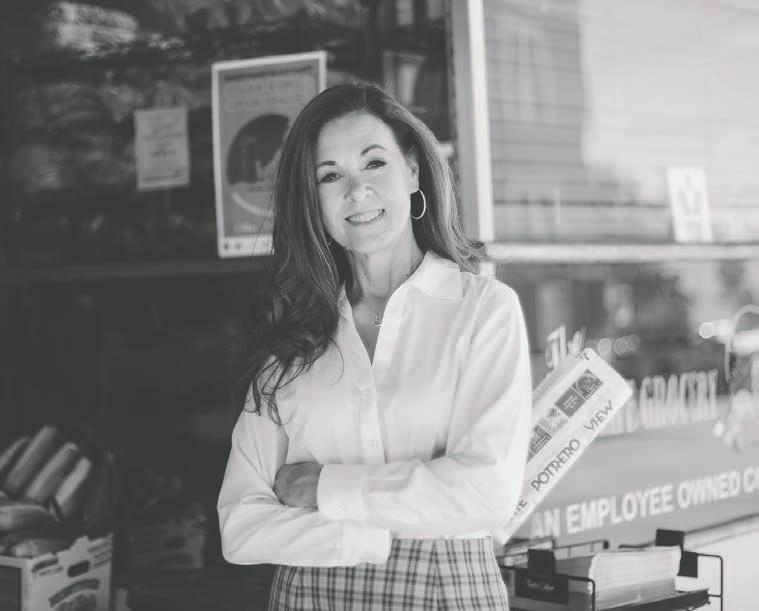
I’m proud to announce that I have joined forces with Zephyr Real Estate’s Noe Valley and Potrero Hill agents! I have been helping buyers and sellers on the Hill since 2002, and my commitment to service with integrity goes hand in hand with the Zephyr model of excellence.
As Your Agent for Good, I’m here to help.
Your Agent for Good.
e-Pro, SRES 415.336.0754 | melinda@melindalee.realtor
Lic. #01344377

locking rails in the floor allow it to be adapted for either seven seats or two crew and two stretchers.
EC-135 has a reputation as a quiet helicopter, with a noise level that’s 6.5 decibels below International Civil Aviation Organization standards. This is due to utilizing a Fenestron tail, a trademarked tail rotor that has 10 blades; conventional rotors have between two and four. The spacing of the blades allows the noise to be diluted over a wider range of frequencies.
Although REACH has one EC-135 in its fleet, the outside companies accessing the helipad utilize a variety of helicopter models. Davis indicated that occasionally a new transport vendor will deviate from the approved path, but that when noticed UCSF has taken measures to correct the company and its pilot.
DAY IN DOGPATCH from page 13
for a quiet, modestly priced, meal. The elegant pupusas avoid the blob-like qualities of lesser iterations of the dish; the fried plantains are sweet, lightly crystalline, on the outside, soft on the inside. La Paz is open pretty much all the time, serving continuously, seven days a week, typically from 10 a.m. to 10 p.m., with only slightly reduced hours on Sundays.






expanded my understanding of tikkun olam and public
.
projects like Senior
offered great
exploring the importance of giving back to the
and I carry these values with me.


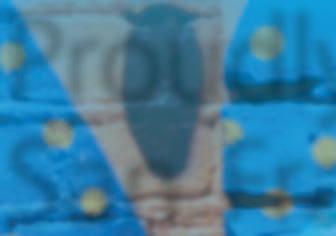






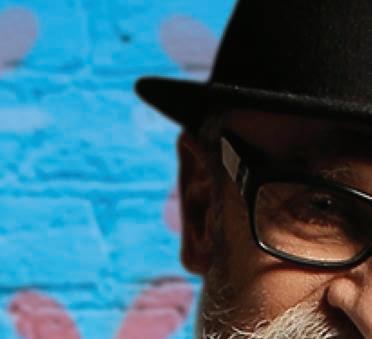
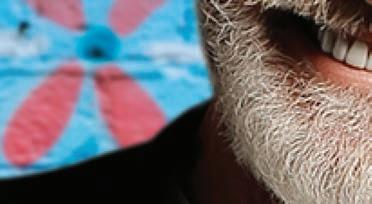
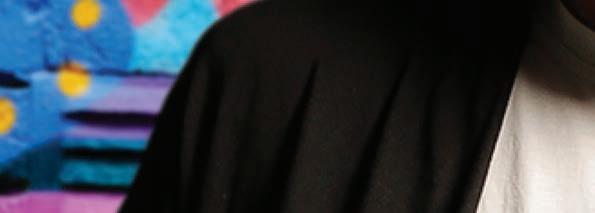
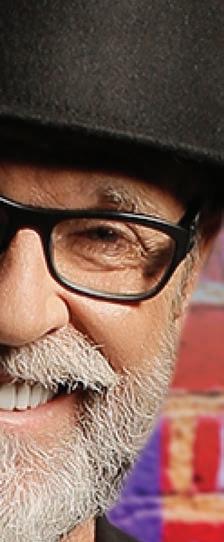


CAMPBELL from page 6
their daughter, Maya Campbell, and life became hectic juggling two careers and a family. A self-described workaholic, Campbell decided to pursue his career as a light artist full-time, and shifted his art studio from home to a rented space on Third Street.
Last month, Hosfelt Gallery, on Utah Street, exhibited about 15 of Campbell’s works. “Far Away Up Close” explored the mysteries of human perception through shifting images flickering through LED lights. “Campbell’s pieces are unique among artists using technology; not only because he designs and builds the computer systems that make them function. More significantly, his choice of media is conceptually linked to his message: he uses technologies developed for information transfer and storage to explore human communication and memory. His is not technology used merely to wow, but to consider the relationship of our minds to the technologies we’ve created,” states Hosfelt Gallery literature.
Perhaps the most monumental work of Campbell’s career is slated to open in January. The recently completed Salesforce Tower, at 415 Mission Street, a joint venture by Boston Properties and Hines, is a 61-story commercial building that’ll feature an LED light installation by Campbell on the tower’s top 150 feet. Illuminated at night, the art display will consist of 11,000 LEDs showing low resolution scenes in color and motion. According to a description from the developers, the LEDs will face inward toward the tower’s center and
produce reflected light, resulting in softer images that’re designed to blend in with the City’s skyline, as opposed to being dramatic. No set narrative will define the changing imagery; they’ll be a combination of scenes photographed from around San Francisco, as well as more abstract graphics.
“The artwork will not function as a billboard, but will be an expression of the building and its relationship to the City, manifesting a poetic presence in both form and content that is inseparable from the gestalt of the building, which is inseparable from the City,” explained a statement from the developer.
Boston Properties-Hines hired art consultants to identify an artist to create an installation for the building’s crown. According to Campbell, they narrowed their search to less than 40 artists from around the world, and asked five finalists to submit proposals, with his design selected.
“I’m 61, and this will have a lot of visibility, in addition to being fun and exciting,” Campbell commented. “A lot of my work starts out as experimental, and this one did too. How can you deal with imagery to help define a skyline? There’s no precedent for that. I’m making it as flexible as possible, so that it works in the context of the skyline and in the context of the City. I don’t want it to be a light show; the last thing I want is a spectacle. I want something that blends and is in harmony with the City.”
Testing of the installation will begin this month, likely at brief intervals in the middle of week, late at night. When is goes live in January, the piece will remain a work in progress
for another year as Campbell solicits public feedback. He estimates that about one million people will be able to view it nightly. Potrero Hill’s north slope will offer a particularly good vantage point to view the tower, and also a decent place to solicit feedback from neighbors, he said.
In addition to the tower installation, a much smaller low-resolution display street-level on Mission Street will complement the scene high above. The building’s 1.4 million square feet of commercial space is beginning to be occupied, including retail spaces on the first and fifth floors. The tower will have direct access to a 5.4-acre City park that’s under construction as part of the adjacent Transbay Transit Center project.
“My goal is that I want people to see things differently,” Campbell expressed. “I want people to think about how they see and perceive things; not to give them everything, but leave holes for their minds to fill in. It’s more about creating images that are felt instead of seen. It’s designed to elicit more of an intuitive and primal response instead of an analytical one.”
FILM from page 12
and speculation, was a collective shrug.
The movie provides a balanced portrayal of Felt’s and the FBI’s role in this particular piece of history, depicting both positive and less savory elements. It’s suspenseful, timely, thoughtprovoking, and enjoyable, whether you remember Watergate or not.
SFPUC from page 3
conduit, we’ll also be installing fire suppression capabilities for the City,” added Sheehan. “Combining the work saves money and time. Hydrants, four times the size of regular hydrants that can deliver high pressure water supplies, will be added along Mariposa to Terry Francois at South Street.” The Auxiliary Water Supply System, also known as the “Emergency Firefighting Water System,” is funded by Earthquake Safety and Emergency Response bonds approved by voters in 2010 and 2014.
The work will also include private development entities that’re undergrounding utilities in the area, such as the Mission Bay Development Group, which is constructing the Mission Bay South project, located between Mission Creek, Mariposa, and Seventh streets and the Bay. Coordination between SFPUC and other entities will allow streets to be excavated to accommodate multiple projects.
“There will be a 72-hour notice for parking,” offered Steve Kech, public relations officer, SFPUC. “Also, barriers will be put in place for rerouting traffic. Most of the work will be in the parking strip next to the sidewalk.”
According to SFPUC representatives, work will be done one block at a time to minimize traffic congestion, preventing entire streets from being closed off during construction periods that’ll only occur during daytime hours. The goal is to allow traffic flow in both directions where construction
SFPUC continues on page 19
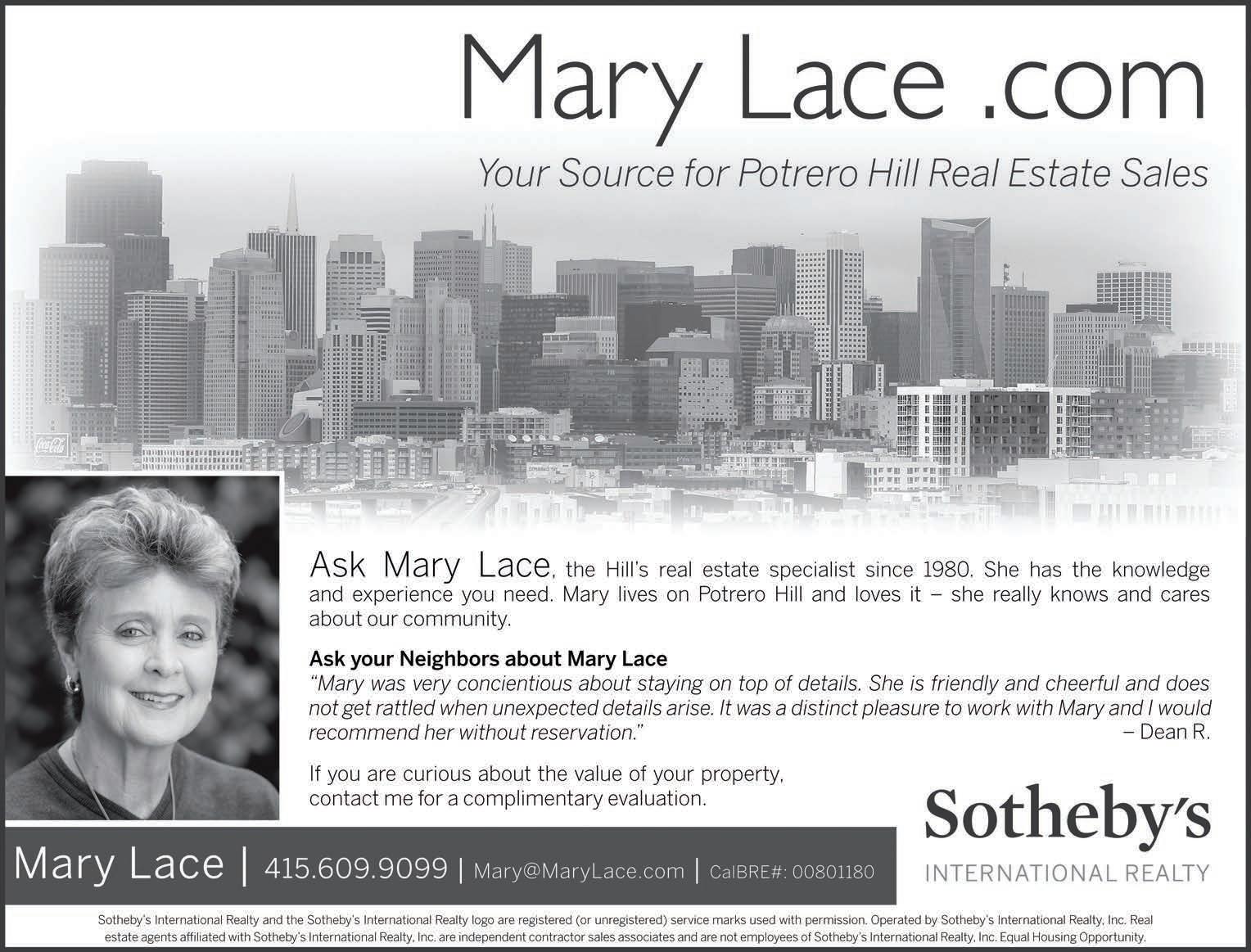
Housekeeping
CLEANING PROFESSIONAL 30 years experience. Apartments, homes or offices and apartment buildings. Roger Miller 415-794-4411 References upon request.
For Sale: Large Columbariam Niche in San Francisco
EXCELLENT DOUBLE NICHE in the original round 1898 building at the San Francisco Columbarium. Price includes all fees and perpetual upkeep. See details and photos here: http://bit.ly/sfniche
Gorgeous, rustic, Muir Beach space and stunning Mission Dolores home available for day rentals. Perfect for six to 10 people engaged in retreats of all kinds: writing, yoga, team-building, strategy sessions. $1,500 to $3,000 a day. Editor@ potreroview.net; 415.643.9578.
City and County of San Francisco Outreach Advertising
News from the San Francisco Department of Elections:
November 2017
Gardener
LOOKING FOR A GARDENER? We are a small full-service landscape and garden company specializing in residential design, construction, maintenance and consulting. http://www.shapeoftheearth.com Call David @ 415.846.7581
Walking distance to the beach, with the crashing waves visible and audible from the place. Three bedrooms, two baths, with a lovely deck. Minimum two nights: $450/weekdays; $500/weekends; $550/holidays. Editor@potreroview.net; 415.643.9578.
Walking distance to the beach, with the crashing waves visible and audible from the place. Includes kitchenette and lovely patio. $175/weekdays; $200/weekends; $250/holidays. Editor@potreroview.net; 415.643.9578.
t r st i oti s r i s or S r is s it i it is ro i ou r i it to rti i t i t rt t o tio s u ssi i it isor o itt . t u rt r ti s rs i r out t rt t s orts to ro i tio s r i s ro r s to o u iti s r is is s o u . rs i so t o ortu it to s r su stio s or s r i ot ti r istr ts ot rs it i it is ro i t rou out S r is o. is is o u t r o ortu it . o r out t ot r o ortu iti s to t i o it t rt t o tio s isit s tio s.or or 415 554 4375.
The Youth Commission is a body of 17 San Franciscans between the ages of 12 and 23. Created by the voters in 1995 through a charter amendment, the commission is responsible for advising the Board of Supervisors and the Mayor on policies and laws related to young people. The commission is also charged with providing comment, recommendation, and feedback on all proposed laws that affect youth before the Board takes final action.
Commissioners work diligently to connect young people from all over the city with one another, develop their leadership skills and understanding of government, and make positive policy changes.
The commission meets on the first and third Monday of every month at 5:15pm in room 416 of City Hall. Their standing issue-based committees meet regularly in the Youth Commission office, City Hall Room 345.
Visit our website www.sfgov.org/yc, email YouthCom@sfgov.org, or call (415) 554-6446 for information about upcoming meetings!
COMMENCMENT OF THE REQUEST FOR PROPOSALS PROCESS AT SFO
ir ort o issio s o t u st or ro os s ro ss or si r i 2 o ssio
Sisters, encouraging participants to turn an issue they felt passionate about into direct action.
Camaraderie and a personal touch make Seismic Sisters work, according to Christensen. “We’re friends in real life,” she said. “I find that’s the secret sauce of the group; we’re building community and deep friendships in the women’s circle.”
In a Mailchimp newsletter Christensen distributes every few months, in addition to curated news articles relevant to feminism, she promotes friends’ projects, such as an art show, play, or documentary. Members also attend conferences together.
“I have a friend who is a woman in tech and she speaks at different conferences,” she said. “We’ll go and
provide a cheering section.”
SFPUC from page 17
is being conducted. The Commission plans to issue notifications on Nextdoor, send mailings, and attend neighborhood meetings to inform community members about the work.
According to Sheehan, the Bay Corridor Transmission and Distribu-
tion high voltage power line will convey Hetch Hetchy hydroelectricity, as well as power from smaller hydroelectric facilities. “It’s about building the City’s clean energy infrastructure, and doing sewer and water work as well,” said Sheehan. “The true value of the project is that by offering clean, Hetch Hetchy waterpower to our customers, we’re lowering the City’s overall greenhouse gas emissions.”

Do you know where to recycle or dispose of your paint?
There are hundreds of PaintCare sites in California where households and businesses can recycle or dispose of unwanted paint, stain and varnish all year round, including this site in San Francisco:
Sherwin-Williams 1503 Sloat Boulevard (415)
www.paintcare.org • (855) 724-6809
All PaintCare sites accept up to 5 gallons per visit (some take more). Please call ahead to confirm business hours and ask if they can accept the type and amount of paint
would like to recycle. Sites do not accept: aerosols (spray paint) or leaking, unlabeled and empty containers.

Quieres información sobre el reciclaje de pintura en español? ? Visite: www.paintcare.org/es.













